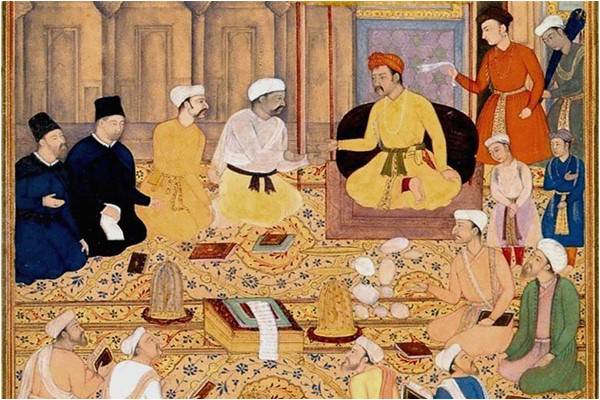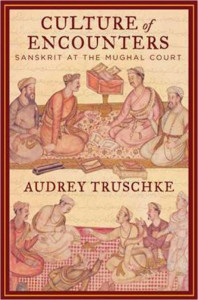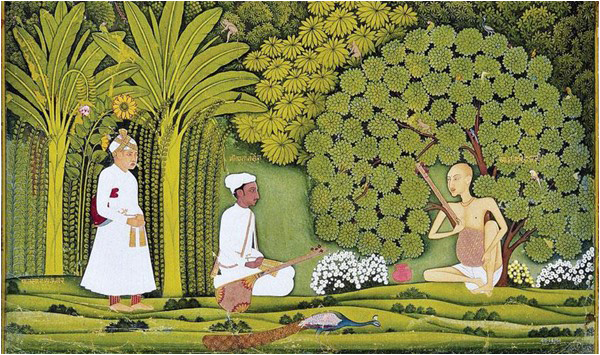

Culture of Encounters: Sanskrit at the Mughal Court
Allen Lane
p XIII + 362 Price Rs 699
In modern India, the debates on Mughals and Sanskrit are an ongoing affair. Both the issues have been painted differently by ideologically differing scholars. Hindu nationalists in India, project Mughal rulers as villains, and glorify Sanskrit as the ‘basic language’ of India, even though, even in ancient India, it was associated mainly with the upper caste Hindus. The common people used to communicate in local dialects, which might often contain some words from Sanskrit. Audrey Truschke, in her work, has presented a systematic understanding of the relationship between the Mughals and Sanskrit. After settling down in India, the Mughals interacted with the socio-political elites, and came in touch with Sanskrit scholars through those interactions. As the two groups did not understand each other’s language, their common language became Hindi, which also included Persian and Sanskrit words. Persian remained a court language, and replaced by Urdu in 1839.
Those who interacted with Mughals in Sanskrit were either Brahmans or Jains. About their entry into the court, Audrey Truschke writes, “In the 1560s and 1570s, Sanskrit thinkers from across the Subcontinent first entered the central court. A select few entered the royal court at the direct invitation of the crown, whereas others gained entrée through regional and subimperial patrons.” According to the author, Mahapatra Krsnadasa of Orissa was the first Mughal-sponsored Sanskrit intellectual and Padmasundara was the first Jain to meet Akbar and also inaugurated the composition of Sanskrit texts for Mughal consumption. By 1569 a treatise on Sanskrit aesthetic theory at the explicit request of Emperor Akbar titled Akbarasahisrngaradarapana (Mirror of Erotic Passion for Shah Akbar) was created.
By virtue of being members of the Mughal court, many of those Sanskrit scholars were also able to extract many concessions. The author writes:
“Hiravijya ensured the release of prisoners captured during the Mughal invasion of Gujarat, which benefitted the region widely. Akbar also granted Hiravijiya’s wish that fishing be prohibited in Damara pond (also known as Dabara), which was located not far from the imperial capital of Fatehpur Sikri.”
Besides translation of Sanskrit texts into Persian, a bilingual grammar was also worked out during the Mughal period
Aside from literature, the Mughals also incorporated Sanskrit astrology into courtly practices. Akbar instituted the position of jyotisaraja (royal astrologer). According to Audrey Truschke, the Mughals also turned to Sanskrit intellectuals for information concerning other Indian practices and ideas that could inform an imperial agenda. They also helped in propaganda to serve the rulers’ purposes. Many Sanskrit scholars had written prose eulogising the emperors to get royal attention and related material benefits. To encourage the Sanskrit scholars, the Mughal kings granted honourary Sanskrit, Persian and vernacular appellations to both Jain and Brahmanical figures.
Besides translation of Sanskrit texts into Persian, a bilingual grammar was also worked out during the Mughal period. It was carried out by Krsnadasa and Karnapura. The two major Hindu texts translated from Sanskrit into Persian were the Ramayana and Mahabharta. Audrey informs that in 1580s, Akbar ordered the translation of the Sanskrit Mahabharta into Persian. It has a preface written by Abu’l Fazal. To translate another Sanskrit epic Ramayana a group of Sanskrit and Persian scholars were nominated. After the Akbari Ramyana was ready, Badauni, Akbar’s most prolific translator, was supposed to write a preface, but he refused. Audrey Truschke writes, “Badauni, found translating Sanskrit materials distasteful and disparages such work several times in his unofficial history. He professed two reasons for not writing the preface: First, providing an introduction would not have served his interests (“I found little benefit”). Second, the preface has had to be written without praise of Muhammad, which would go against his religious convictions when he had already skirted heresy by translating the Ramayana at all.” On Dara Shikoh, Audrey maintained, “despite his engagements with Sanskrit, and projections of being a secular Prince, he was also, as, no doubt motivated to engage with Sanskrit texts and ideas by political ambitions”. On Prince Dara Shikoh, Professor Harbans Mukhia in his review of this work has correctly maintained: “let Prince Dara remain Shukuh (glory) instead of Shikuh (terror).” The later has been used by Audrey Truschke to spell Dara’s second name.

Disagreeing with the hypothesis of many modern scholars about the Mughals’ supposedly secular credentials and progressive outlook, Audrey writes, “While there is a strong temptation to celebrate Mughal cross-cultural activities, we wade here into murky waters. Modern thinkers have often mischaracterised the Mughal as exhibiting a protoversion of modern religious toleration or even secular tendencies .There may be great political value in interpreting the Mughal past to foster a precedent for contemporary tolerance, but the truth of the matter is more complicated than this prosecular prodemocracy narrative.”
This book by Audrey Truschke is a significant contribution in the existing literature and a major intervention in the study of the Mughal rule in India. It will greatly help in the understanding of various socio-political complexities of the Mughal world.

